BenQ XL2720T Gaming Monitor Reviewed
by Chris Heinonen on June 17, 2013 4:35 PM ESTI calibrate every monitor using CalMAN V5 with an i1Pro spectrometer and a SpectraCal C6 colorimeter. Our first calibration target is for 200 nits of light output, the sRGB color gamut, and a power gamma of 2.2. For the calibration I used the Standard mode on the monitor, as that allowed access to the User Color Temperature control, which let me set 100% white correctly without using the video card LUT.
Using this setup, our grayscale really comes into line on the BenQ. Our average error is really non-existent, other than at 0 which we can’t fix, and I can’t exclude from this chart or I would. The color tint has been totally eliminated, and the gamma is almost spot-on. Our contrast ratio has risen to 820:1, a 16% increase in what is often the most important element of an image overall. As far as grayscale goes, this is essentially perfect.
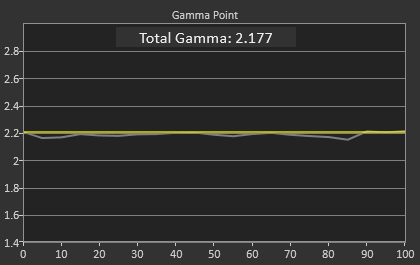
On the color side we see some improvement, but this is mostly due to the improvement in the grayscale. SpectraCal is going to improve CalMAN to remove White from the Gamut dE2000 number, to provide a more accurate data point on how much color error was improved in the future. The red primary is a little under-saturated and green is a little low in luminance, both errors that calibration can’t correct. The color gamut is good, but not excellent.
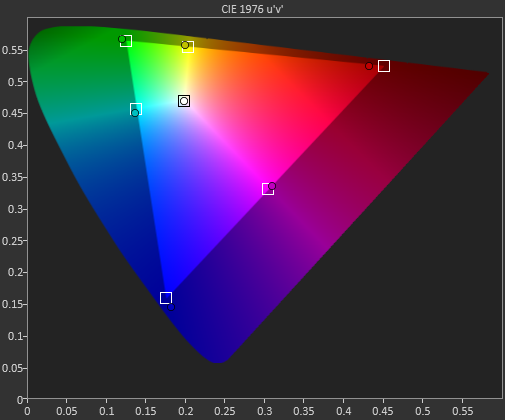
The Colorchecker data is better, but also not perfect here. The formerly high luminance has now been fixed, and luminance is nearly perfect. Those orange-yellow shades continue to cause issues however, with errors close to 3, and the same goes for a shade of blue that lies on the edge of the sRGB gamut. The numbers are much better than before but not as good as some other displays, especially on those orange-yellow colors.

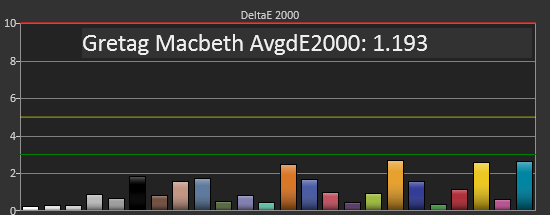

After calibration the saturations are almost worse at 100%, but better below that. Some people disagree on if it is better to have 100% saturation fixed or the values below that have a lower error, but overall the values are better than they were before calibration.
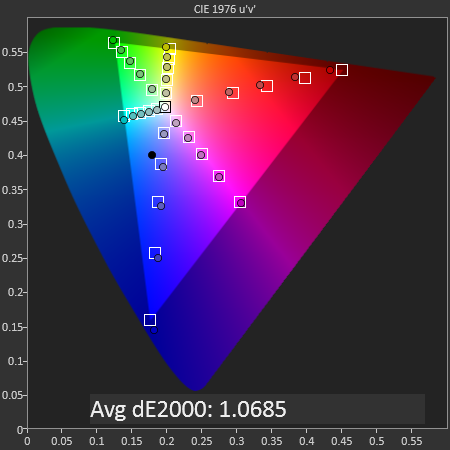
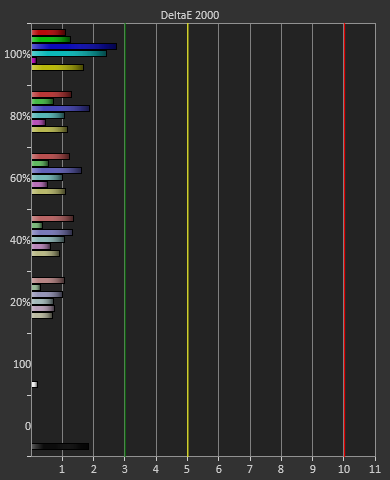
Post calibration, the BenQ is certainly better than it was before it. It is virtually perfect in the grayscale, but the gamut doesn’t improve that much as the issues it has are ones that calibration can’t fix, as calibration can’t add luminance or saturation that isn’t there to begin with. I was happy to see how much the BenQ improved, and you can do much better than the preset sRGB mode.


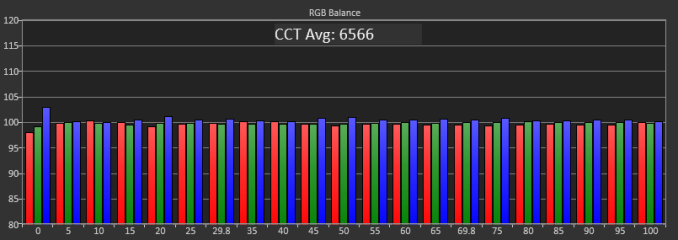
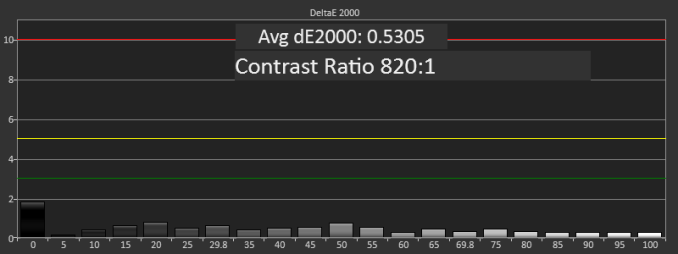










79 Comments
View All Comments
metril - Monday, June 17, 2013 - link
Now that others have pointed out, I see the 1080p tag. I agree that a table would have been beneficial. I guess, I'm so used to see tables like in the other reviews that I've come to expect one in any review. It provides a quick overview before I go and read the review. Nonetheless, thanks for the review. :)brucek2 - Monday, June 17, 2013 - link
The list of tags right under the article's title includes "1080p", and then there's the discussion on the next to last page how all current 120hz monitors are 1080.Of course the table is a good idea. I feel like there usually is one? Maybe something got lost in the editorial pipeline?
thwaak - Monday, June 17, 2013 - link
I agree, this was a major oversight. I had to skim the article till the second last page to determine that it was 1080p, and even then it's really not even directly stated.Rob94hawk - Monday, June 17, 2013 - link
Yeah had to read it a few times to figure out what the resolutions was.r3loaded - Monday, June 17, 2013 - link
Are there any 120Hz IPS monitors? I'm sure many people would want one.jackstar7 - Monday, June 17, 2013 - link
Overlord is one of the places you can get the closest thing to 120Hz IPS (at 1440p). Takes some gfx horsepower, but is worth it.Rob94hawk - Monday, June 17, 2013 - link
No offense but 2560x1440, 2560x1600 gaming is where it's at. Reviewing a 1080p monitor is like reviewing socket 775 all over again.birru - Monday, June 17, 2013 - link
That's a complete exaggeration. High resolution gaming is awesome, and there's real value there, but 1080p is absolutely relevant. Especially when you factor in trying to maintain 120fps or 144fps to keep up with these high refresh LCDs while avoiding tearing. Even with my GTX 780 I've found that with some recent titles I have to scale back the eye candy a touch to keep the experience at a solid 60fps. And that's at 1080p. So with a top of the line single GPU you'd certainly have to reduce visual fidelity a bit more at higher resolutions. And of course it gets worse with triple screens if you want to go that route. 3x1080p is feasible with one GPU. 3x1440p and you're looking at SLI or Crossfire.Resolution costs money; how sharp do you want to go?
sxr7171 - Monday, June 17, 2013 - link
Same issue here. 780GTX and I need to turn settings down in Crysis 3. This is at 1080p. Can't imagine how that would work out at 1600p. I guess SLI is a must with those resolutions along with all the problems.brucek2 - Monday, June 17, 2013 - link
Per Steam, 1080p and under is something like 98%+ of all gamers (and this is billed as a "gaming monitor" review.)Sure I'd expect that the percent of newly purchased monitors may be somewhat higher, but I bet it's still well south of 10%.